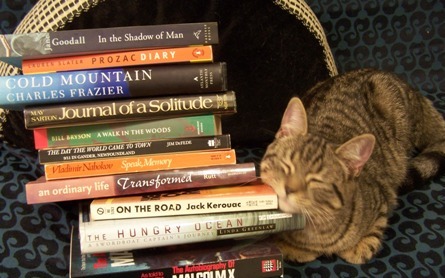There is a widespread linguistic myth that the Eskimo have 50 plus words for snow. That would make sense, but it depends on how you define a word, and what Eskimo tribe you single out. In the meantime, to satisfy one's linguistic yearnings, there are hundreds of documented Sami words for snow. Who are the Sami? The Sami are the indigenous people of Arctic Norway, Sweden, Finland and Russia. Not surprisingly, they also have hundreds of words for reindeer.
These are some of the terms that describe the condition and layers of snow:
1. čahki “hard lump of snow... hard snowball”
2. geardni “thin crust of snow”
3. gaska-geardi “layer of crust”
4. gaska-skárta “hard layer of crust”
5. goahpálat “the kind of snow-storm in which the snow falls thickly and sticks to things”
6. guoldu “cloud of snow which blows up from the ground when there is a hard frost without very much wind”
7. luotkku “loose snow”
8. moarri “brittle crust of snow, thin frozen surface of snow
9. njáhcu “thaw”
10. ruokŋa “thin hard crust of ice on snow”
11. seaŋaš “granular snow at the bottom of the layer of snow”
12. skárta “thin (more or less ice-like) layer of snow frozen on to the ground”
13. skáva “very thin layer of frozen snow”
14. skávvi “crust of ice on snow, formed in the evening after the sun has thawed the top of
the snow during the day”
15. soavli “very wet, slushy snow, snow-slush”
16. skoavdi “empty space between snow and the ground”
17. vahca “loose snow (especially new snow on the top of a layer of older snow or on a road
with snow on it)”
The following describe conditions of travel through snow:
18. bearta “heavy going because the ground is bare (without snow) in many places”
19. bohkolat “deep snow of varying depth; small (steep) snow-drift on road
20. časttas “hard snowdrift (smaller than skálvi)”
21. čearga “snowdrift which is so hard that it bears”
22. činus “firm, even snow (but not firm enough to bear)”
23. dobádat “sticky snow, heavy wet snow”
24. fáska “snow blown together by the wind
25. gálja “very slippery going, frozen, slippery surface”
26. girrat “heavy (of the going in frosty weather)
27. joavggahat “place where the snow lies particularly deep after a fall of snow”
28. lavki “slippery going: ice covered with loose, dry snow with no foothold”
29. moarri “the kind of going, surface, when the frozen snow or crust of ice breaks and cuts
the legs of horses or reindeer”
30. muovllahat “place where people or animals have ploughed through or plunged along in
deep snow or a soft bog”
31. njeađgga “’ground drift’ (drifting snow which gets blown up from the ground)
which covers roads or tracks.”
32. oavlluš “depression, hollow, with slushy snow in it, on land or on ice”
33. oppas “untouched, untrodden, covering of snow
34. rodda “hard going (too little snow)”
35. sievlla “the state of things when the spring snow is so soft that one sinks in it”
36. skálvi “big (high, steep and usually hard) snow-drift”
37. skoarádat “the kind of going in which one hears a grating noise as the
kjerris, sleigh, ski passes over a rough surface”
38. spoatna “hard, firm, snow to drive on (when there is little snow)”
39. veađahat “place where snow has been blown away; (nearly) bare patch
Words for Tracks in Snow
40. čiegar “snow-field which has been trampled and dug up by reindeer (or sheep in
autumn) feeding there”
41. čilvi “ice-covered area where reindeer have been grazing in mild weather”
42. doalli “winter road or track covered by snow but still distinguishable”
43. doavdnji “snow of such a depth that skis or a sleigh will not come in contact with the ground
autumn) feeding there”
41. čilvi “ice-covered area where reindeer have been grazing in mild weather”
42. doalli “winter road or track covered by snow but still distinguishable”
43. doavdnji “snow of such a depth that skis or a sleigh will not come in contact with the ground
44. fieski “area where a grazing herd of reindeer has been
45. jođáhat “tracks in the snow left by a migrating reindeer herd”
46. jolas “tracks made in the snow by reindeer, dogs or wolves which have gone in a row”
47. láhttu “ski-track”
48. loanjis “tracks of the whole herd of reindeer”
49. márahat “large, beaten winter-track”
50. rádnu “tracks of a hare (where the hare has gone frequently to and fro)”
46. jolas “tracks made in the snow by reindeer, dogs or wolves which have gone in a row”
47. láhttu “ski-track”
48. loanjis “tracks of the whole herd of reindeer”
49. márahat “large, beaten winter-track”
50. rádnu “tracks of a hare (where the hare has gone frequently to and fro)”














